Derby's Heritage Part 33 - The Mill & The River
w/e 30 September 2012
All this week's pictures were taken
with a Kodak DX6490
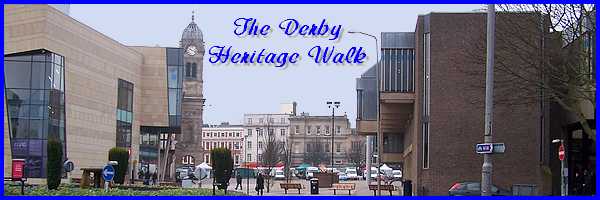
For the bulk of this heritage walk around Derby,
I have used several leaflets detailing city centre routes supplemented
by further investigation from a number of sources. There is one
leaflet however that I have used only sparingly so far but as
we approach the final segments of the walk, it will come into
its own as it details the "Riverside Quarter Trail"
along the bank of the Derwent through the city centre. As well
as looking at some of the historical buildings and structures
it also features some of the natural history of the area as will
soon become apparent. To begin though, we'll start outside the
Silk Mill Museum.
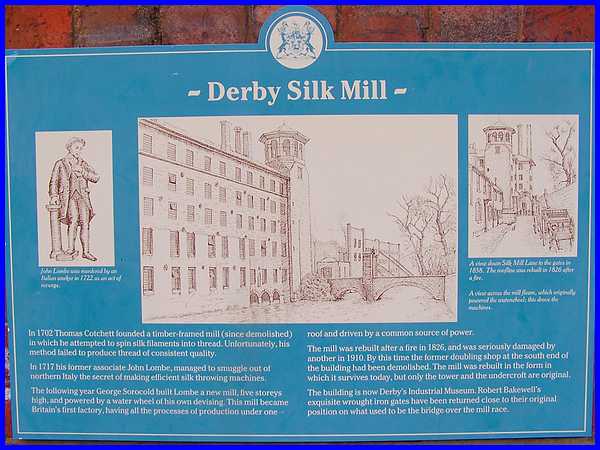
On the wall of the museum is an information board (click here for enlargement) with some facts
about the mill's history and a sketch of John Lombe who was murdered
here by an Italian worker after he had smuggled the secret of
making efficient silk throwing machines out of Northern Italy.
|
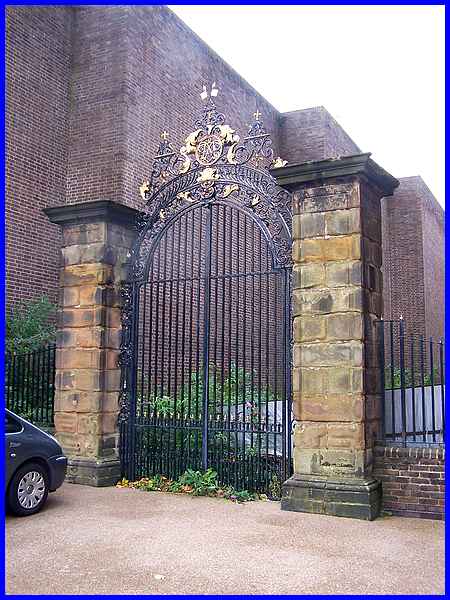
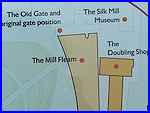 What
I found interesting about the board was the sketch on the right
of the board which shows the view down Silk Mill Lane in 1858
indicating the position of Robert Bakewell's wrought iron gates.
The aforementioned gates have now been repositioned at the side
of the museum close to their original position and if I am reading
another nearby information board correctly they were at ninety
degrees to their present orientation. The same sketch on the
board also shows a row of cottages next to the mill but today
these have been replaced by a high brick wall surrounding a large
electricity substation. What
I found interesting about the board was the sketch on the right
of the board which shows the view down Silk Mill Lane in 1858
indicating the position of Robert Bakewell's wrought iron gates.
The aforementioned gates have now been repositioned at the side
of the museum close to their original position and if I am reading
another nearby information board correctly they were at ninety
degrees to their present orientation. The same sketch on the
board also shows a row of cottages next to the mill but today
these have been replaced by a high brick wall surrounding a large
electricity substation.
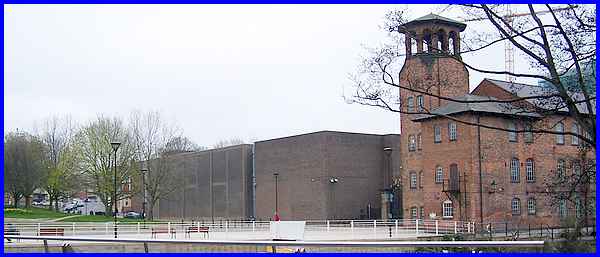
The substation is all that remains of the former Derby Power
Station which stood on the site of what is now the Cathedral
Park on the left of the image above. Following the substation
round into Sowter Road we can now return to the Chapel on the
Bridge (Part 07)
but instead of crossing the St Mary's Bridge this time we can
descend and access a timber boardwalk at the side of the River
Derwent.
|
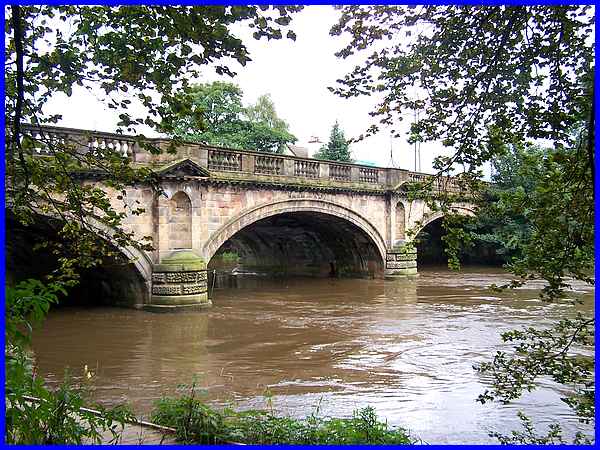
The bridge built in 1794 by Richard Trubshaw to a design by Thomas
Harrison of Chester replaced an earlier one that had stood here
since about 1275.
|
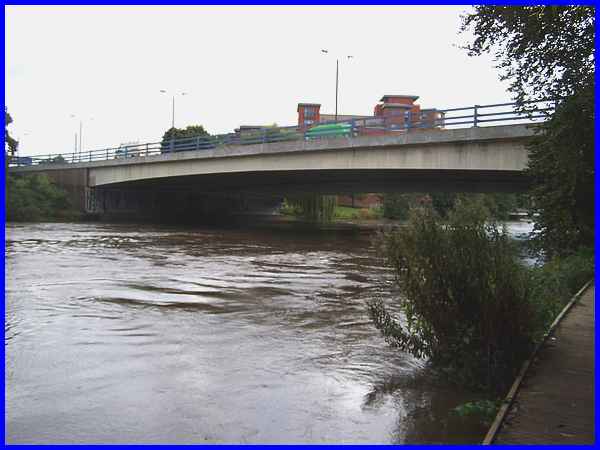
For many years St Mary's Bridge carried much of the traffic entering
the city but since the construction of the adjacent Causey Bridge
and the ring road, the volume of traffic on the old bridge has
significantly reduced. Whilst it is easy to admire the smooth
lines and the engineering of the Causey Bridge I'm afraid the
concrete structure pales in comparison to the elegance of St
Mary's Bridge. The "Riverside" leaflet points out that
Daubenton's Bats fly low over the river on summer evenings but
on a September afternoon all we saw were pigeons flying under
the bridge.
|
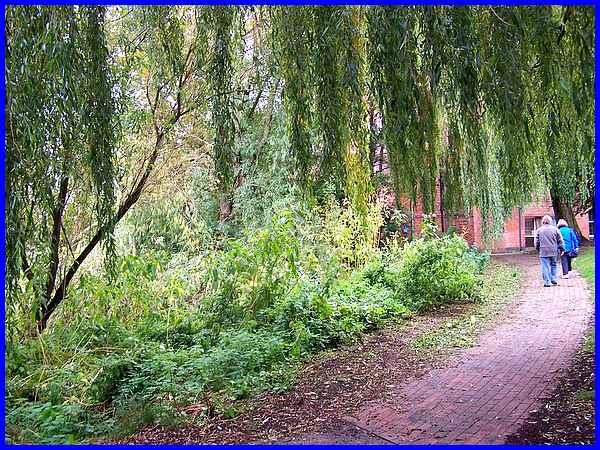
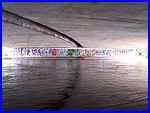 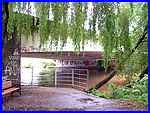 After passing
under Causey Bridge (left) the path swings away from the river
(right) and the ground between can become quite muddy but it
supports two types of willow - the Osier (with much narrower
leaves) and the Crack Willow. Woodland plants like Wild Garlic
and Lesser Celandine can also be seen in spring whilst in summer
Himalayan Balsam and the poisonous Hemlock are prevalent. After passing
under Causey Bridge (left) the path swings away from the river
(right) and the ground between can become quite muddy but it
supports two types of willow - the Osier (with much narrower
leaves) and the Crack Willow. Woodland plants like Wild Garlic
and Lesser Celandine can also be seen in spring whilst in summer
Himalayan Balsam and the poisonous Hemlock are prevalent.
|
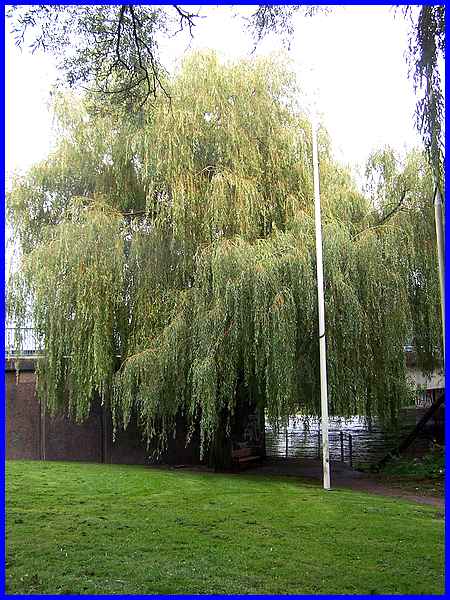
At the side of the Causey Bridge is a large Weeping Willow which
is a hybrid famed for its bright green leaves and drooping slender
branches.
|
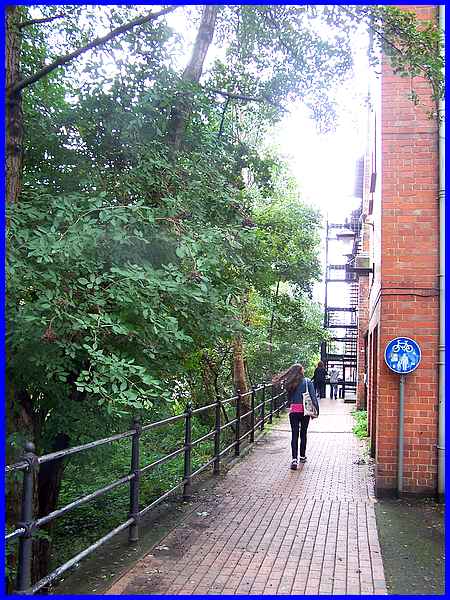
The path now continues at the side of the Silk Mill Museum again
and here we are advised to scour the riverbank for rats with
their pointed noes and long tails. We are also advised not to
encourage them by leaving food as they carry diseases. If there
were any rats there as we passed they were well hidden but that
could have been something to do with the earlier heavy rainfall
and swollen waters which had brought all sorts of detritus downstream
to the river's edge and disturbed their natural habitat. Despite
the possibility of rats, this passageway forms a popular short
cut for pedestrians and cyclists.
|
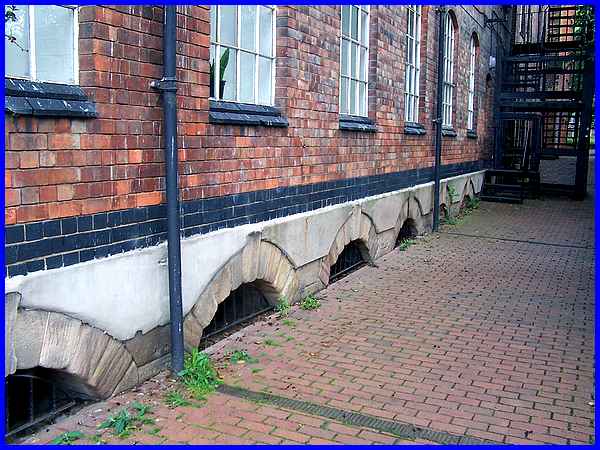
The Silk Mill was the first of Derby's mills and was built in
1717-18 but burnt down in 1910. It was rebuilt and only the octagonal
tower and the foundation arches from the original building survived
to be visible in the present day. The path continues back to
the front of the Silk Mill Museum which is where we will resume
the walk along the riverbank.
|

